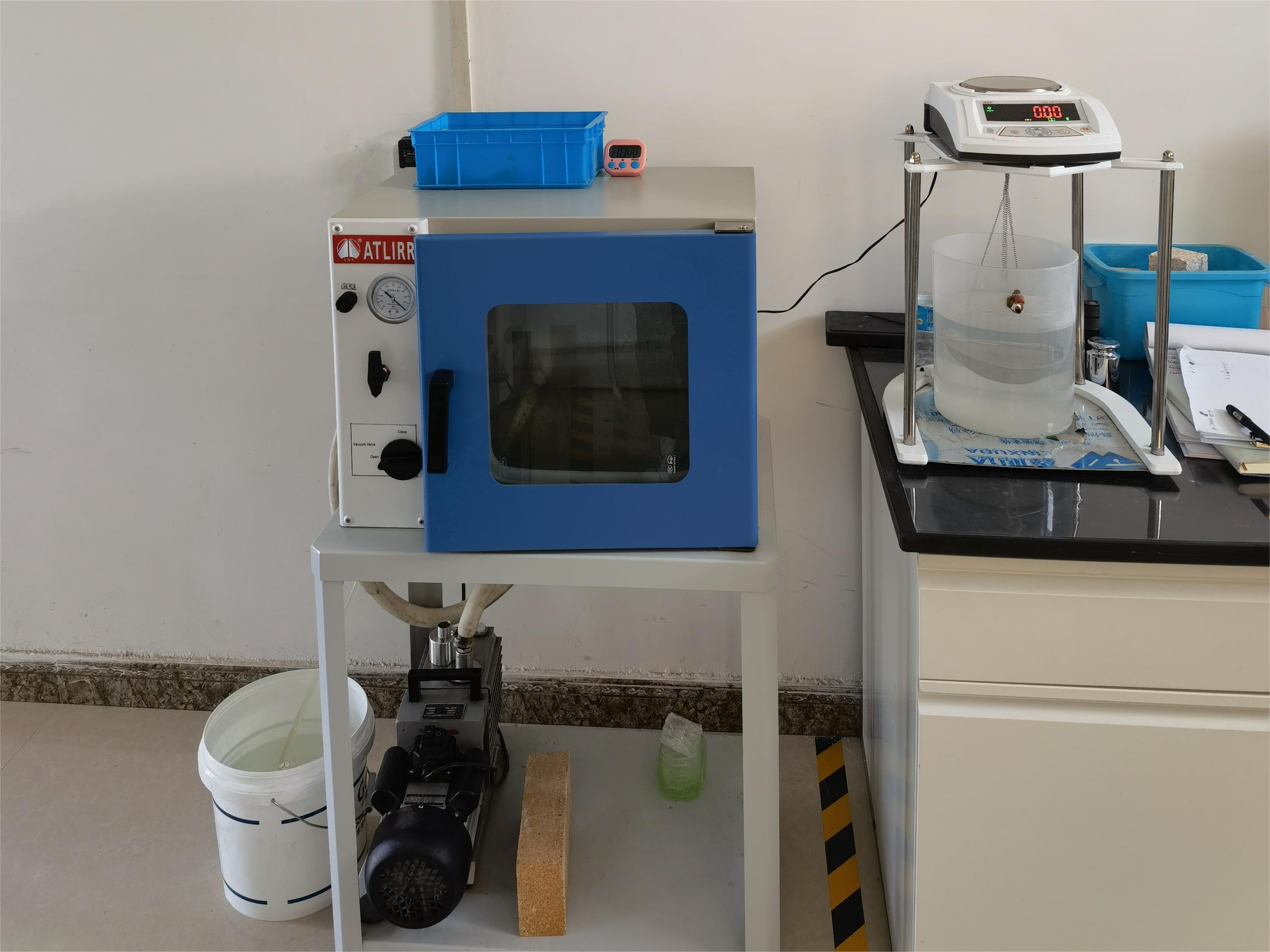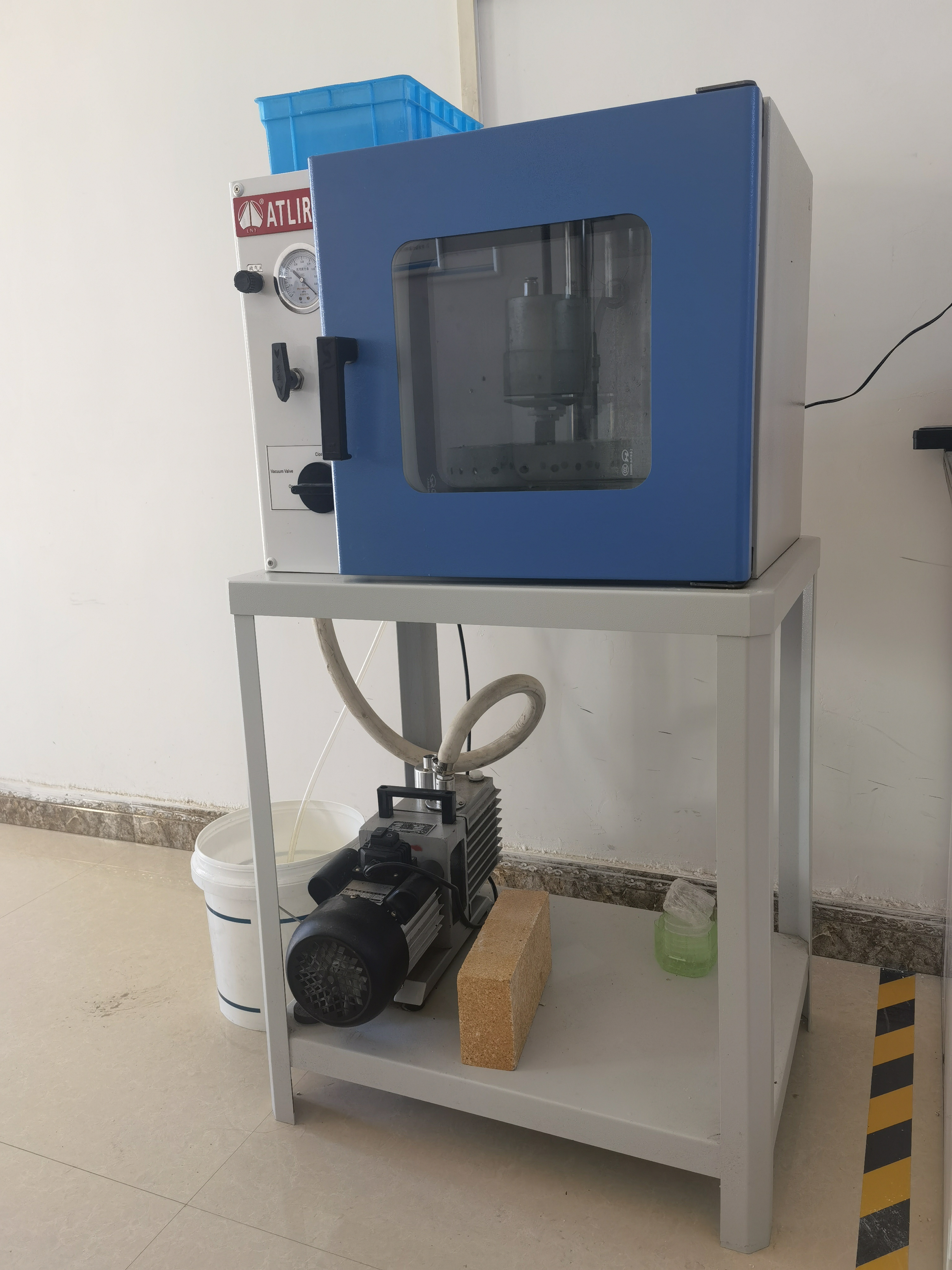Porosity and Bulk Density Test
Operating Procedures for Porosity and Bulk Density Test
Objective: To detect the apparent porosity, bulk density and water absorption of refractories at room temperature.
Operating steps:
1. To remove the dust and particles on the surface of the test sample, to dry it at 110±5℃ for 2 hours in the electric drying oven, and then to take it out and cool it to room temperature.
2. To weigh the mass of the sample, accurate to 0.01g.
3. To put the sample into the tray and put it in the vacuum box. To switch on the vacuum pump to pump the vacuum to -0.098MPa and keep it for 5min. To switch off the power supply of the vacuum pump, and then slowly inject the liquid (industrial water or industrial pure organic liquid) for the sample to absorb into the tray through the reverse flow pipe at the rear of the vacuum box until the sample is completely submerged. To start the vacuum pump to pump the vacuum to -0.098MPa and keep it for 5min, to stop pumping, open the inlet valve of the vacuum box to the current atmospheric pressure, to take out the tray and leave it in the air for 30min to fully saturate the sample.
4. To fill the overflow basin with absorption liquid until it flows out of the overflow hole, then to remove the weight of the balance and prepare for weighing.
5. To quickly move the fully saturated sample to the filter screen of the weighing rack, and to make submerge the sample completely submerged with the liquid. When the liquid no longer overflows from the overflow hole, to weigh the buoyant weight, accurate to 0.01g.
6. To take out the sample from the filter screen of the weighing rack, place it on a towel that has been fully absorbed with absorption liquid, and then carefully wipe off the excess liquid on the surface of the sample with a towel (but the liquid in the air holes cannot be absorbed out). To quickly weigh the saturated weight of the sample in the air, accurate to 0.01g.
7. Finally, to measure the density of the absorption liquid.
Note:
1. To accurately measure the mass of cuboid or cylinder sample whose volume is not less than 150 cm3 and whose edge length or diameter is not less than 50 mm.
2. The balance shall be placed in a dry, dust-free and vibration-free environment, and the ambient temperature and humidity shall meet its standards.
Previous page




